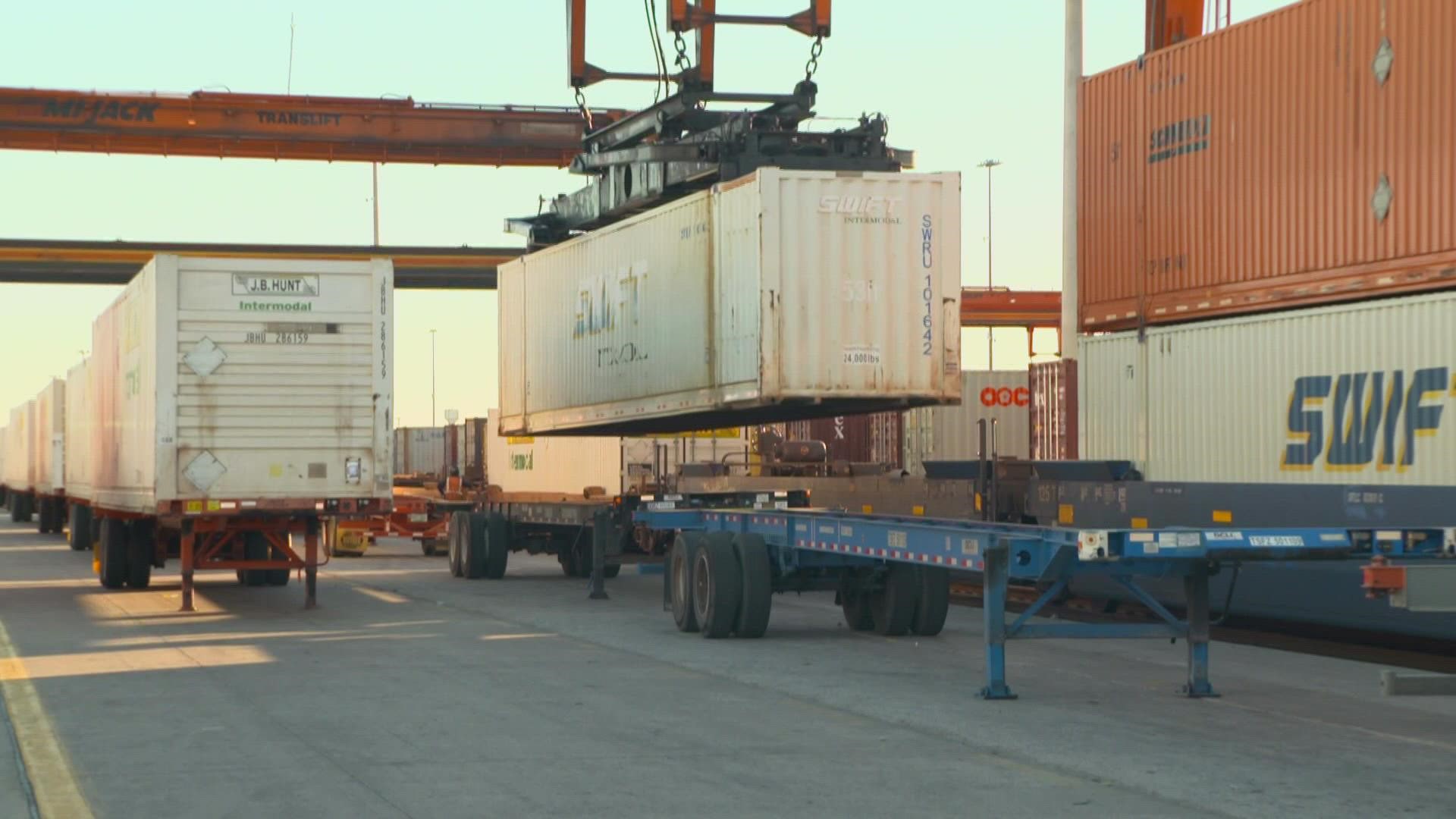HASLET, Texas — Supply chain crisis.
Those three words have wiggled their way into so many conversations across the nation as Americans stare at inflation, labor shortages and product shortages, with almost a month to go until Christmas.
For weeks, we've seen images of backlogged ports on the West Coast.
Things have improved, but 71 container ships were anchored offshore outside Los Angeles and Long Beach ports just Friday, waiting to unload.
And North Texas?
Well, our region plays a significant role in getting those containers where they need to go.
Just north of Fort Worth, in the small town of Haslet, you'll find the BNSF Alliance Intermodal Facility.
It's part of the Alliance Global Logistics Hub, including the Fort Worth Alliance Airport, the FedEx Southwest Regional Sort Hub, and Amazon Air’s newest regional air hub, among 500-plus other companies in residence.
Running 24/7, BNSF receives freight at the facility and then offloads it for customers to drive it to their respective warehouses.
Customers using the facility are DHL/Excel, FedEx JC Penney, Michaels, Ryder Integrated Logistics, UPS Supply Chain Solutions, and Walmart, to name a few.
Twenty-three cranes run day and night throughout the facility, placing containers onto chassis, which are then parked in any of the facility's 6,607 parking spaces.
There's also room on the property to stack more than 600 containers if spaces fill up. BNSF has also juiced up its operations to alleviate shipping backlogs by deploying more than 1,000 locomotives and hundreds of rail cars.
However, John Gabriel, BNSF's Vice President of Operations for the southern sector, says the facility is not at capacity despite issues on the West Coast.
"We're well resourced to handle more than we currently are," Gabriel said.
The headache for BNSF (and ultimately consumers too) isn't moving freight in, but waiting for companies to come to pick it up.
Fifteen hundred containers come in and out of the facility daily, Gabriel said.
Before the West Coast mess, Gabriel says it would take 24 hours or less for a container to get driven out of the facility by a company.
That timeframe is much longer now.
"We've seen that more than double throughout the supply chain crisis to where we've got units that are sitting here, on average, more than two days," Gabriel said.
"We've also got several hundred units right here in Alliance that sat more than a week for a customer to come and take them to a distribution facility."
Gabriel also said that chassis, which are what containers sit on and trucks hook up to haul, aren't being returned to the facility as quickly.
"We've seen those times go from two to three days to more like eight or nine days in the current environment that we're in," Gabriel said.
That fact goes to show that unloading at distribution facilities is also snarling.
The facility was overwhelmed earlier this year in February during Texas' historic winter storm.
Then, BNSF said that container parking was packed and the count was approaching 9,000.
Around 1,200 containers were also ground-stacked.
Gabriel says there are no issues like that right now approaching the holidays.
"Any congestion can be found at an intersection like this where a customer and an entity like us come together," Gabriel said.
So what does Gabriel think about this question: Will things get better?
"We're counting on labor shortages to heal themselves, but we think this is really a demand function and don't see things getting better anytime soon," Gabriel said.

